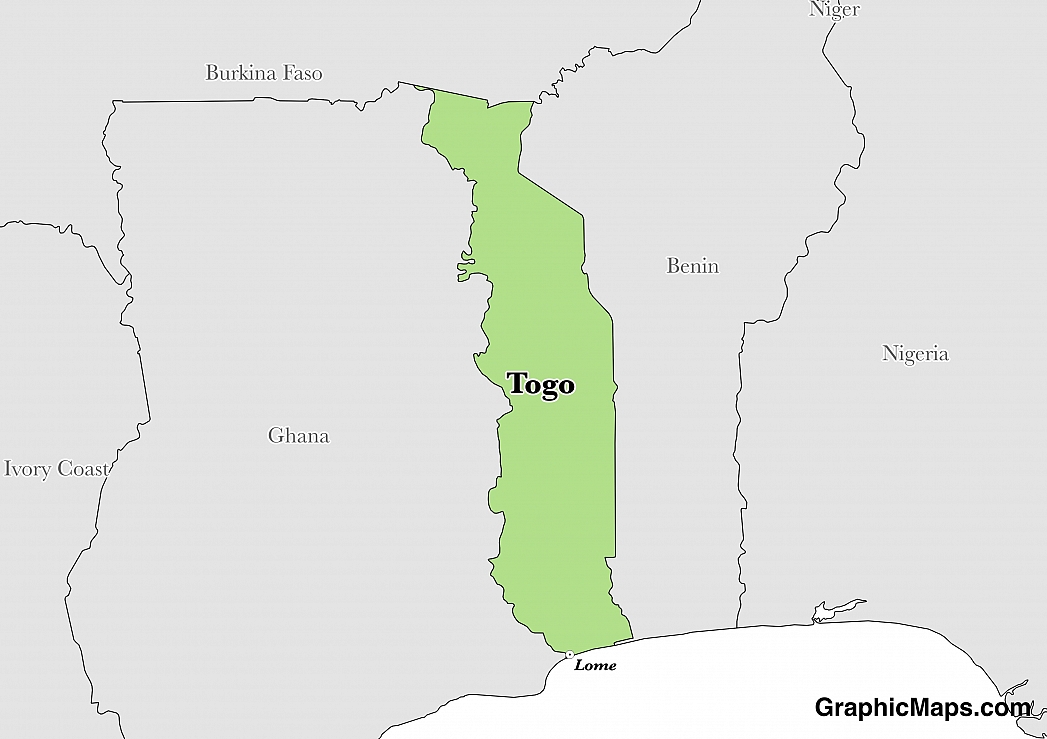The capital of Togo is Lomé, which is located along the Atlantic coast in an area referred to as the Gulf of Guinea. This position makes Lomé the principal port city of the country. The northern border of this city is shared with a large lake, while its western border is shared with the city of Aflao in Ghana. In the late 1800’s, European traders expanded upon the already existing settlement here, declaring Lomé the capital of then German-controlled Togoland in 1897. In 1916, it switched hands to French colonialists. Lomé has remained the administrative capital since throughout all of this time.
The population of Lomé is estimated at around 837,437, although the entire metropolitan area has a population size of 1,477,660. This size makes Lomé the largest city in the country. The number of inhabitants here has grown exponentially since the 1950’s, when the census reported a population of only around 30,000 individuals. This unprecedented growth has brought with it a number of urban problems, namely issues of sanitation and hygiene, which are the principal concerns of the municipal government.
Lomé is home to the only international airport in Togo, so any visitors coming to this country must first pass through this city. The other common entrance into Togo is via Aflao, Ghana, which again leads visitors directly to Lomé. This city makes an excellent place for tourists to get to know a little more about the culture here. One of the best ways to do that is to visit the Grand Market, which sells produce, local handicrafts, and clothing. Another interesting market is known as Voodoo Market, which has a number of unique items. A trip to Lomé should also include a stop at the Togo National Museum, located inside the Congressional Palace. This museum offers exhibits on the history and culture of the area.
Lomé is located in the tropical savanna climatic zone. This classification means that the city experiences low rainfall, a characteristic that is not common in the rest of the country. The hottest temperatures, an average of around 85.3° fahrenheit, occur in February and April. The coolest temperatures are in July, when the city reaches around 76.8° fahrenheit. This occurs just after the rainiest month (June), when a little over 7 inches of rain falls. Annual average precipitation measures around 35.2 inches.
This page was last modified on May 1st, 2018
More on Graphicmaps

Published on 2019-11-06
What is a Trade Embargo?

Published on 2019-11-04
Which Two Countries Used to Have the Same Flag?

Published on 2019-09-16
What Is the Only Two-Sided State Flag?

Published on 2019-09-16
Which Country Flag Looks Like the Texas Flag?

Published on 2019-08-29
Flags That Resemble the US Flag

Published on 2019-08-20
